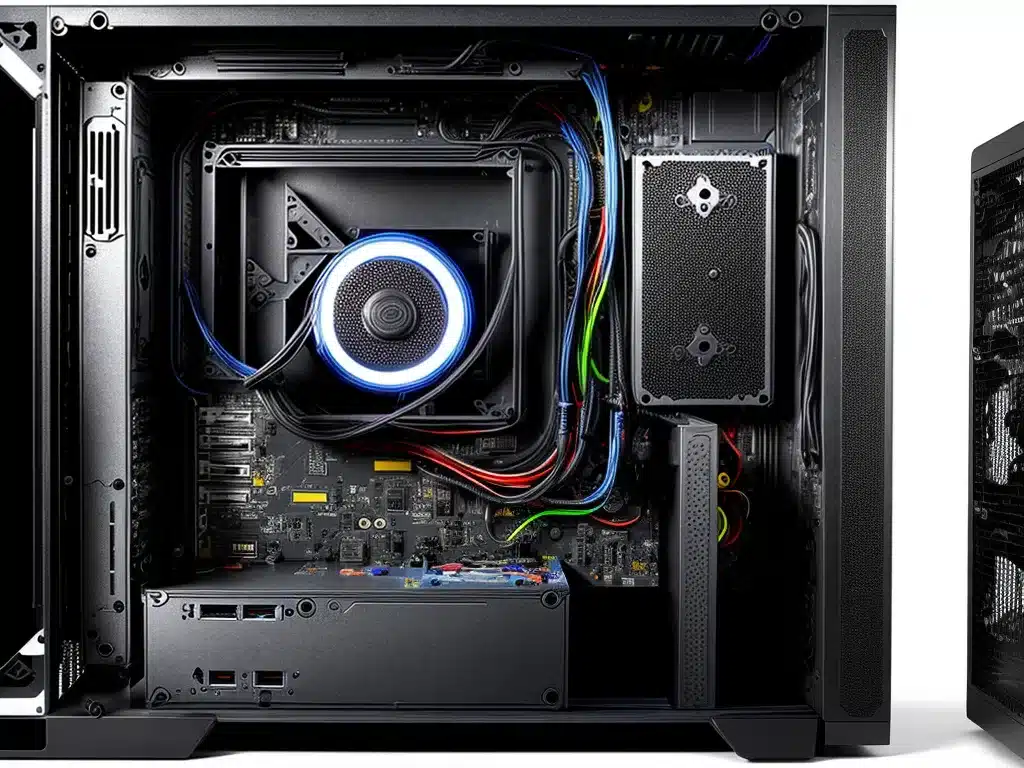
Having a noisy case or chassis fan in your desktop PC can be annoying and distracting. Thankfully, there are several things you can try to quiet a noisy fan and get your system running silently again.
Diagnosing the Problem
The first step is to identify which fan is causing the noise. To do this:
-
Power off and unplug your computer. Open up the case and visually inspect each fan. Look for any obvious signs of damage or obstruction.
-
Spin each fan gently with your finger to feel for roughness or grinding. A healthy fan should spin smoothly and quietly.
-
Listen closely to identify which fan is making noise. It often helps to use a long paper tube or roll of paper as a stethoscope, placing one end near the fan and the other to your ear.
-
Consider when the noise occurs. Noise on boot or under load points to a cooling fan issue. Noise at random times could be a case fan.
Once you’ve identified the noisy fan, it’s time to try some fixes.
Quick Fixes
Try these simple fixes first to see if they eliminate the noise:
-
Clean the fan and housing of any dust buildup using compressed air. Dust can cause friction and vibration.
-
Tighten the fan mounting screws. Loose screws can cause rattling vibrations.
-
Lubricate the fan bearings using a small drop of sewing machine oil or bearing oil. This reduces friction.
-
Check fan power connections and make sure no wires are damaged or crimped.
-
Adjust fan speed in BIOS or using utility software. Running the fan slower may reduce noise.
Replacing the Fan
If simple fixes don’t solve the problem, the fan may need replacement:
-
Match the replacement based on physical size, power connector type, and CFM rating.
-
When installing, use rubber grommets between the screws and fan housing to reduce vibration.
-
Apply a fresh dab of lubricant to the new fan bearings before installing.
-
Re-route or tie back cables if necessary to avoid interference.
For case fans, consider replacing with a quieter aftermarket fan. Models from Noctua, be quiet!, and Noiseblocker make excellent replacements.
Advanced Troubleshooting
For persistent fan noise issues, try these advanced steps:
-
Test fan voltage to make sure the fan is receiving normal 12V power. Insufficient voltage can cause vibration.
-
Replace the fan controller if the noise stems from unstable power delivery.
-
Swap fan positions to determine if noise follows the fan or is tied to a certain location/orientation.
-
For water cooling radiator fans, bleed trapped air from the cooling system. Air bubbles can cause noise.
-
Isolate the source by running the PC with panels/covers removed. This eliminates acoustic amplification.
-
As a last resort, install sound dampening materials like rubber grommets, silicone fan mounts, or noise-absorbing foam pad
With some targeted troubleshooting, you should be able to pinpoint the cause of a noisy fan and get your desktop PC humming quietly once again. Just take it step-by-step.












